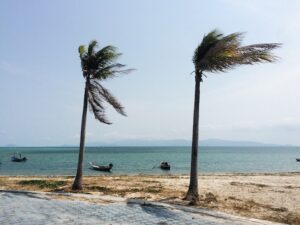In the sun-soaked lands of Belize, where the lush jungles meet the shimmering shores, lies a world teeming with fascinating creatures. Among these inhabitants are the enigmatic and often misunderstood arachnids known as scorpions. With their ancient lineage and intriguing adaptations, scorpions play a vital role in the delicate balance of Belize’s ecosystems. In this article, we delve into the captivating realm of scorpions in Belize, uncovering their diversity, separating myths from reality, and offering valuable insights for safe encounters in the wild. Join us on a journey through the secrets of these intriguing creatures as we unravel the mysteries of Belize’s scorpion population.
The Scorpion World: Diversity and Adaptations in Belize
Belize’s scorpion world is a realm of diversity and remarkable adaptations, showcasing a wide array of species that have evolved to thrive in varied habitats. From the dense rainforests to the arid savannas, scorpions have established themselves as resilient predators, finely tuned to their surroundings.
One of the most striking aspects of Belize’s scorpion diversity is the range of sizes and colors these creatures exhibit. From the tiny but venomous bark scorpions to the larger, imposing emperor scorpions, each species has evolved distinct characteristics that aid in their survival. The vibrant hues of some species serve as a warning to potential predators, signaling their venomous nature, while others blend seamlessly into their environment, relying on stealth for hunting success.
Adaptations in anatomy further highlight the ingenuity of Belizean scorpions. Their segmented bodies, adorned with pincers and a curved tail ending in a venomous stinger, are marvels of evolutionary design. These features allow them to efficiently capture prey, defend against threats, and navigate their surroundings with precision. Some species possess specialized sensory organs, such as sensitive hairs that detect vibrations, enhancing their ability to detect prey or avoid danger.
Beyond physical adaptations, Belizean scorpions have also developed fascinating behavioral strategies. Some species are solitary hunters, stalking their prey with stealth and patience, while others exhibit communal living, sharing shelters and cooperating in hunting activities. These behavioral nuances reflect the complex social dynamics and survival strategies that have evolved over time.
Despite their fearsome reputation, Belize’s scorpions play a crucial role in maintaining ecological balance. They regulate insect populations, serving as natural pest controllers, and contribute to nutrient recycling through their scavenging habits. Understanding the diversity and adaptations of these arachnids provides valuable insights into Belize’s rich biodiversity and the intricate web of life that sustains its ecosystems.
Myths vs. Facts: Debunking Common Misconceptions about Scorpions
Scorpions have long been shrouded in myths and misconceptions, often portrayed as deadly monsters lurking in the shadows. However, separating fact from fiction reveals a more nuanced understanding of these fascinating arachnids in Belize.
One of the most prevalent myths surrounding scorpions is their perceived aggressiveness towards humans. Contrary to popular belief, scorpions are generally shy and prefer to avoid confrontation. They use their venom primarily for hunting and self-defense, rarely attacking unless provoked or threatened. Understanding their behavior can help dispel unfounded fears and promote coexistence with these essential creatures.
Another myth revolves around the potency of scorpion venom. While some species possess venom that can cause discomfort or pain to humans, fatalities from scorpion stings are rare, especially in Belize where medically significant species are relatively uncommon. Most scorpion stings result in localized symptoms that can be managed with proper first aid and medical attention if necessary. Education about the types of scorpions present and their potential effects can mitigate unnecessary panic and misconceptions.
The belief that all scorpions are nocturnal hunters is also a misconception. While many species are indeed nocturnal or crepuscular, active during twilight hours, some scorpions in Belize are diurnal, preferring to hunt and forage during the day. This diversity in activity patterns reflects their adaptability to different environmental conditions and underscores the complexity of their behavior.
Additionally, the idea that all scorpions are solitary creatures is not entirely accurate. Some species exhibit social behaviors, forming colonies or aggregations for communal living. These social structures serve various purposes, including cooperative hunting, protection against predators, and reproduction strategies.
By debunking common myths about scorpions and presenting factual information, we can foster a more informed and respectful perspective towards these fascinating arachnids, recognizing their ecological importance and unique adaptations in Belize’s diverse ecosystems.
Staying Safe: Tips for Scorpion Encounters in Belize’s Wilderness
Encountering scorpions in Belize’s wilderness can be a thrilling experience for nature enthusiasts, but it’s essential to prioritize safety to minimize potential risks. Whether exploring rainforests, hiking trails, or venturing into secluded areas, following these tips can help ensure a safe and enjoyable interaction with scorpions.
First and foremost, awareness of scorpion habitats is key to avoiding accidental encounters. Scorpions typically inhabit areas with suitable shelter, such as under rocks, logs, and debris, or in burrows dug into the ground. Exercise caution when lifting or moving objects in these habitats, as scorpions may be hiding underneath.
When trekking through scorpion habitats, wearing sturdy footwear and long pants can provide physical protection against accidental stings. Scorpions often use their venomous stingers as a last resort when threatened or cornered, so maintaining a respectful distance and refraining from touching or provoking them is crucial.
Using a flashlight or headlamp during nighttime excursions can aid in spotting scorpions, as many species are nocturnal and more active after dark. Shine the light low to the ground, scanning crevices and dark corners where scorpions may be lurking. This proactive approach allows for careful navigation and reduces the likelihood of surprise encounters.
In the event of a scorpion sting, remaining calm is paramount. Most scorpion stings in Belize result in localized pain, swelling, and redness at the site of the sting. Immediately wash the area with soap and water, apply a cold compress to reduce swelling, and seek medical attention if severe symptoms develop, such as difficulty breathing or allergic reactions.
Educating oneself and fellow travelers about scorpion species native to Belize, their habitats, and basic first aid measures can enhance preparedness and promote responsible wildlife interaction. By embracing a mindset of coexistence and respect for nature’s inhabitants, adventurers can enjoy Belize’s wilderness while prioritizing safety and conservation efforts.
Final Thoughts
Exploring the realm of scorpions in Belize unveils a world of diversity, adaptations, and fascinating behaviors. As we conclude our journey through this captivating arachnid domain, several key takeaways emerge.
Firstly, understanding the reality behind common myths and misconceptions about scorpions is crucial. They are not aggressive towards humans by nature, and their venom, while potent in some species, rarely poses significant risks to human health. By debunking myths, we can appreciate scorpions for their ecological roles and evolutionary marvels without undue fear.
Secondly, practicing safety measures during scorpion encounters is essential for both human well-being and wildlife conservation. Respectful observation from a distance, awareness of habitat characteristics, and preparedness for potential stings contribute to harmonious coexistence in Belize’s wilderness.
Lastly, fostering an appreciation for the intricate beauty of scorpions enhances our connection to nature. Their diverse colors, behaviors, and adaptations showcase the wonders of evolutionary biology and underscore the importance of preserving biodiversity.
In conclusion, venturing into the world of scorpions in Belize offers insights into the delicate balance of ecosystems and the resilience of life forms. By embracing knowledge, safety, and appreciation, we can navigate this realm with curiosity, respect, and a deeper appreciation for the natural wonders that surround us.




